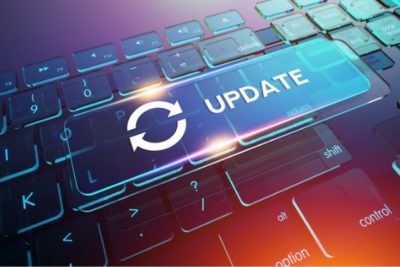Changes Before And After Implementing Asset Tracking Software

Growing your business assets to improve brand value and business revenue is a proficient strategy. Even so, managing too many assets challenges productivity and workflow efficiency.
Remember, keeping track of asset repairs, lifecycle, and security is crucial. Inadequate asset tracking and management result in reduced ROI, productivity, management costs, and arbitrary decision-making.
Asset tracking software combats these challenges by tracking and managing the asset’s entire lifecycle. That said, this is what you can expect before and after implementing asset tracking software in your organization.
Before an Asset Tracking Solution
Most companies start to track assets through spreadsheets or other manual asset tracking means. Manually tracking these assets as a business grows is expensive, error-prone, and requires significant time and effort.
Asset Loss
One of the most prominent challenges organizations from different industries face is securing their assets, especially from theft. These assets are not often recovered. In 2014, construction businesses lost a total of $1 billion yearly in heavy equipment. In 2019, retail shrink loss in the US reached $61.7 billion.
Without asset tracking software, businesses risk losing assets to theft or misplacement. With lost assets, business processes are delayed because of asset downtime, which, in turn, affects the ROI.
Reduced Asset Visibility
Asset valuation impacts your business valuation. But without asset tracking software, your assets are almost invisible. It can take a while to determine how many assets you have, how many need repair, the maintenance schedule for each, and the location of an asset. Lack of visibility into your asset valuation contributes to asset loss and overall company productivity and efficiencies.
Learn more about Ghost Assets: Paying For What You Don’t Have
Increased Asset Breakdown
If keeping track of your assets, their lifecycle, and management is challenging, you’ll find it difficult to anticipate possible equipment breakdown. Dealing with unexpected asset breakdowns creates new bottlenecks and increases downtime, affecting the bottom line.
Mismanagement Of Inventories
Companies waste money and resources if they purchase more assets than they need. You lose productivity with insufficient assets since it delays employee and business performance.
The right inventory balance is crucial since it reduces waste, increases profits, and ensures business operations run seamlessly. But keeping track of assets manually is challenging, meaning a lack of asset tracking software might result in poor management of your stock.
After Asset Tracking
Once you implement asset tracking software into your business operations, you automatically become updated with the location, condition, and lifecycle of your assets.
Recovery Of Assets Becomes Possible
With asset tracking software, you no longer worry about deploying thousands of assets to different locations and losing them to theft or mismanagement. Instead, you gain the upper hand with software tracking features like RFID that identify an asset’s location in real-time.
Asset tracking records every asset data, allowing you to track its assigned owner. Therefore, if you lose an asset, you can trace it to a specific employee.
Improve Asset Management Practices
Because asset tracking software gives you visibility into your entire asset valuation, it becomes easier to manage every asset in your organization. For instance, the asset tracking software records asset lifecycle and maintenance schedule data.
Companies are notified beforehand when repair or replacement is needed for an asset before it breaks down and affects your workflow. Human errors that occur during management or monitoring also reduce because the software automates most processes and keeps an accurate and unique record of every available asset.
Increase Productivity
Asset tracking software eliminates manual scanning and tracking processes as the assets move between departments and locations. This does two things: It keeps asset data updated, meaning employees don’t have to worry about tracking the assets, leaving them more time to take on more challenging tasks. Asset recovery processes become less time-consuming, which, in turn, enhances productivity.
Better Customer Service
If assets are up to date in performance and availability, it becomes much easier to deliver to your customers without delays or downtimes, thus gaining their loyalty. Additionally, asset visibility allows you to share the location of assets with your customers in case they purchase products from your organization which inspires trust in your brand.
Asset tracking software allows you to improve customer satisfaction.
Reduce Costs
Think about it: you can plan with a designated budget if you know when to schedule maintenance and repairs for your assets. Therefore, you don’t have to use the money for other business operations when unexpected breakdowns occur.
Additionally, asset tracking software reduces theft, especially employee theft, which, in itself, is a protection of your asset investment.
Asset Tracking is Imperative to Business Success
Apart from improving your asset maintenance and tracking processes, asset tracking software will also ensure you remain compliant if you are in a regulated industry. Why? It doesn’t merely eliminate your asset visibility issues; it also increases your productivity and ROI. Therefore, asset tracking software is critical in successfully growing and scaling your business.
FAQs
What happens if I don’t have asset tracking software?
You are wasting time and money because the lack of asset tracking software means you spend more time tracking and managing your assets, affecting your productivity and customer satisfaction levels.
Will I benefit from implementing asset tracking software in my business?
Yes. Implementing asset tracking software in your business has numerous benefits, like an increase in productivity and ROI.
How can asset tracking software increase my ROI?
Asset tracking software accurately tracks and stores all your asset data. This gives you visibility into your assets as they move from one department or location to another. Automating asset tracking also saves you time, and time for business equates significantly to productivity and revenue bottom-line.
